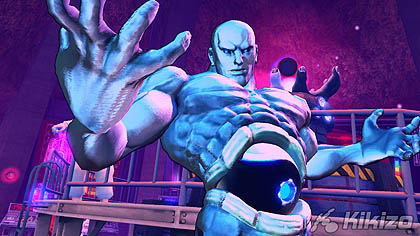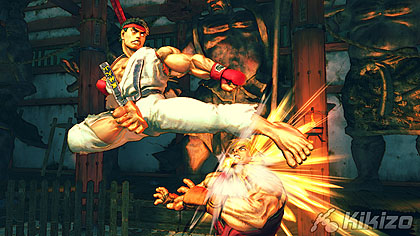Street Fighter IV Capcom Interview
We turn to the man behind Street Fighter IV, Capcom's Yoshinori Ono, to articulate why the series packs a punch after 20 years - and why its latest episode will own you.
Page 3
Kikizo: Speaking of the new characters, how long would you say it takes to fully develop a new character for the game?
Ono: That's a tough question. The guy who does the character designs for this game is named Ikeno - you probably know him already from his work on Street Fighter III. When he's really into a project, he can come up with new character designs pretty darn quick. But when you think of all the editing and tweaks that need to be made from initial concepts... we're looking at a process of months just to get a design finalized. That's just the beginning.
After we've got the design down, we have to start thinking about the character's skills and how they'll fit into the overall scope of the game. That takes another few months. Then there's the modeling phase, and takes a few more months... when all's said and done, it takes about a year to really get all the characters solidified. Of course, we're working on them all simultaneously. It makes us really glad we went with polygons, because it's infinitely easier to make minute adjustments to polygon models than it is to re-draw a bunch of sprites [laughs].
Kikizo: Talking about polygons, one of the biggest challenges I've seen for developers taking 2D gameplay into the third dimension is with the animation. When you have sprites, usually the animation isn't quite as detailed. As a result, the gameplay tends to flow a bit faster. But when you have polygons, you have to fill in so many in-between frames to make it look smooth, and it feels a bit slower. How did the team work to get around this technical issue?
Ono: That's a really good question. The AOU build - the one we showed at GDC - had that exact problem in a pretty big way. What we did is we counted all the frames, and compared them to the punches and kicks in the original Street Fighter 2. Theoretically, they should have been the same, as far as frame timing was concerned. What happened was that, since the game is moving at 60 FPS, and Ryu's arm flows smoothly instead of going [imitates a jerky sprite motion] , it looks... strange, like an optical illusion, like it's going too slow, and you can't immediately switch to your next move.
After that, we took the user feedback we got from AOU and location tests to heart, and we went back over all the techniques in the game. If you look really closely, you can kind of see what we did - we actually reduced the animation frames. It's not something you would normally do with a polygon-based game, but when you punch or kick now, it doesn't animate at 60 FPS. It does skip frames to make the game flow feel more natural. We think doing that has given the game more... Street Fighter-ness that it didn't have to the degree we wanted in earlier version.
Kikizo: And this is also why you changed from a 3D style collision system to a 2D style "hitbox" system?
Ono: Yes, exactly. We changed the collision and had people on staff analyzing each and every frame, making sure things moved and looked like they should. It took us quite some time, and people probably thought we were nuts for doing it, but we think it really paid off!
Kikizo: Thanks so much for your time.
Street Fighter IV is awesome. It's out now in Japanese arcades, and coming next year to PC, PS3 and 360.













 Satoru Iwata Video Interview - the late Nintendo president spoke with Kikizo in 2004 as 'Nintendo Revolution' loomed.
Satoru Iwata Video Interview - the late Nintendo president spoke with Kikizo in 2004 as 'Nintendo Revolution' loomed. Kaz Hirai Video Interview - the first of Kikizo's interviews with the man who went on to become global head of Sony.
Kaz Hirai Video Interview - the first of Kikizo's interviews with the man who went on to become global head of Sony. Ed Fries Video Interview - one of Xbox's founders discusses an epic journey from Excel to Xbox.
Ed Fries Video Interview - one of Xbox's founders discusses an epic journey from Excel to Xbox. Yu Suzuki, the Kikizo Interview - we spend time with one of gaming's most revered creators.
Yu Suzuki, the Kikizo Interview - we spend time with one of gaming's most revered creators. Tetris - The Making of an Icon: Alexey Pajitnov and Henk Rogers reveal the fascinating story behind Tetris
Tetris - The Making of an Icon: Alexey Pajitnov and Henk Rogers reveal the fascinating story behind Tetris Rare founders, Chris and Tim Stamper - their only interview? Genuinely 'rare' sit down with founders of the legendary studio.
Rare founders, Chris and Tim Stamper - their only interview? Genuinely 'rare' sit down with founders of the legendary studio. The History of First-Person Shooters - a retrospective, from Maze War to Modern Warfare
The History of First-Person Shooters - a retrospective, from Maze War to Modern Warfare